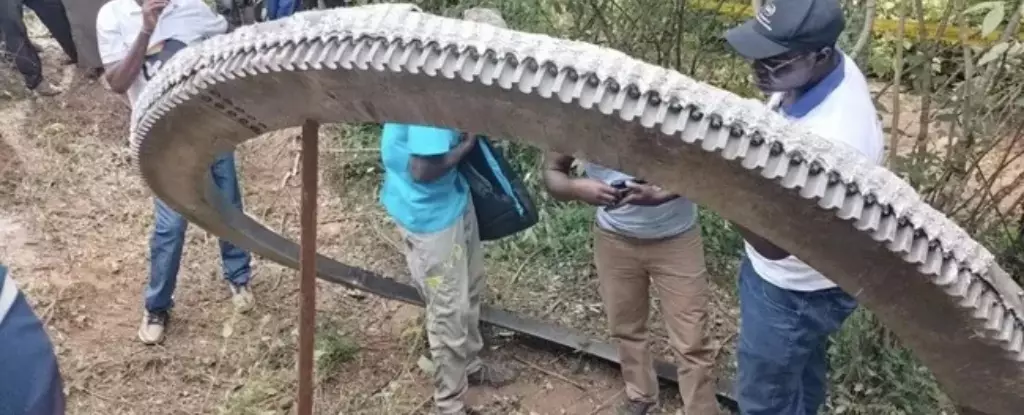On a seemingly ordinary Wednesday afternoon, Mukuku Village in Makueni County, Kenya, found itself at the center of an extraordinary event. At approximately 3 p.m. local time, a colossal metallic ring, weighing about 1,100 pounds and measuring eight feet in diameter, crash-landed in the village. The incident was promptly reported by the Kenya Space Agency, which confirmed that no injuries occurred. This peculiar arrival serves as a stark reminder of the ever-present risks associated with space debris, a problem that has grown as human activity in outer space has increased.
The appearance of this object sparked immediate intrigue and concern. Major Alois Were, a representative from the Kenya Space Agency, speculated that the metallic ring could be a remnant from a rocket separation stage. However, as of now, the exact origins of this debris remain unknown. The agency has taken precautionary steps by collecting fragments from the crash site for further investigation, aiming to ascertain the responsible parties for the fallen debris. This incident sheds light on the legal and ethical implications of space exploration, especially regarding accountability and safety.
Global Implications and the Risk of Space Debris
While the incident in Mukuku Village did not result in any harm, the broader implications of space debris cannot be overlooked. Space debris refers to defunct satellites, spent rocket stages, and fragments from previous collisions, which now clutter the Earth’s orbit. Historically, there have been documented cases where space debris has posed significant threats to people and property on the ground.
In May 2024, for instance, a significant piece of debris from a SpaceX rocket crashed on a hiking trail in North Carolina. If a hiker had been present at that moment, the consequences could have been grim. Further alarming events occurred earlier in the year when a small piece of debris fell through a Florida family’s roof, prompting the family to sue NASA. These incidents underline the potential dangers associated with the increasing frequency of rocket launches and the resultant space debris accumulation.
The frequency of launches has been escalating dramatically since the late 2000s, with the global average rising from about 82 launches per year from 2008 to 2017, to around 130 between 2018 and 2022. By 2024, the number of launches reached a record high of approximately 250. Such a surge in activity, while indicative of humanity’s relentless pursuit of knowledge and exploration, also heightens the risks associated with space debris.
This growing concern extends beyond just the immediate threat it poses to life on Earth. Scientists warn that the accumulation of debris in space could lead to disastrous consequences, including catastrophic collisions and the onset of a situation referred to as the Kessler Syndrome. This phenomenon describes a scenario in which the density of objects in low Earth orbit becomes so high that collisions become frequent, generating even more debris and rendering space around Earth unusable.
As the risks associated with space debris mount, it becomes imperative for international organizations and space-faring nations to address this burgeoning threat. The Kenya Space Agency’s response to the Mukuku incident illustrates an initial step toward tackling space debris accountability. However, effective solutions will require a collaborative approach that includes stricter regulations, improved tracking technologies, and advancements in debris removal strategies.
The unforeseen arrival of the metallic ring in Mukuku Village is a wake-up call for all stakeholders in the space exploration community. As humanity delves deeper into the cosmos, it bears a collective responsibility to ensure that such activities do not compromise the safety and security of life on Earth or the integrity of space as a research frontier. The future of space exploration hinges not only on what can be discovered beyond our planet but also on how responsibly and sustainably we manage the impact of our endeavors on the Earth and its orbit.



Leave a Reply